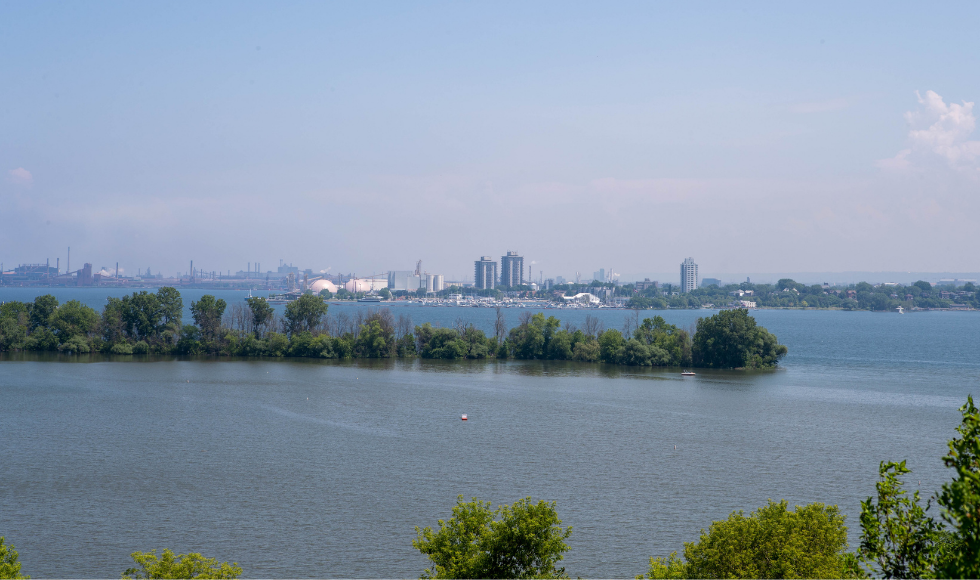In the news: Bruce Newbold on Hamilton’s air quality

Hamilton has seen a “significant reduction” of city-wide air pollutants since 1996, a report from Clean Air Hamilton finds.
BY Nicole Schandl
February 22, 2022
Hamilton’s air quality is improving, according to the latest annual report from Clean Air Hamilton.
“The news continues to be good,” Bruce Newbold, professor in the School of Earth, Environment, and Society, and chair of Clean Air Hamilton told CBC News.
“Although, we also know there are variations in air quality across the city and so what we see in the west end of the city differs from elsewhere.”
Levels of particulate matter such as road dust and pollen have increased slightly in west Hamilton, but have mostly fallen throughout the rest of the city. This kind of pollution comes via air systems from outside the city, like the Ohio Valley, he said.
Benzene and benzo(a)pyrene levels are also down throughout the city, but are still higher than the guidelines from the Ministry of Environment, Conservation and Parks. Newbold said these pollutants are typically caused by industry or incomplete combustion of fossil fuels.
The report found that pollutants like sulphur dioxide and nitrogen dioxide have increased in Hamilton’s industrial areas.
Since 2012, downtown Hamilton had higher levels of sulphur dioxide than downtown Windsor, Sarnia, west Toronto, downtown Ottawa, Sault Ste. Marie and Sudbury.
Hamilton also had higher levels of nitrogen oxides than Toronto, Burlington, Oakville, St. Catharines and Kitchener.
“It probably reflects the mix of industry we have within the city and the location of industry within the city compared to some of these other locations,” Newbold said.
Hamilton did not see a significant drop in air pollution in 2020 despite the pandemic lockdown, Newbold said in an interview with the Hamilton Spectator. However, he stressed that the long-term trend is still “good news” for Hamilton.
Overall, Clean Air Hamilton’s 2020 report showed a “significant reduction” of city-wide air pollutants since 1996.
This information comes as the latest census data finds Hamilton’s population is now among the most dense in the country.
“I was surprised at how strong the growth was,” Newbold told the Hamilton Spectator, “We knew it’s been growing, but to see it clock in at six per cent, that’s more than what we might’ve expected.”
Newbold also spoke to CBC News about this growth, explaining that “over the course of the pandemic, [there has been] movement out of the big cities like Toronto and into smaller places like Hamilton.”
While Hamilton’s population growth is in part driven by the pandemic, Newbold said that it started before 2020.
“Hamilton has great links into downtown Toronto with GO transit, for example. So, that makes it a really accessible community,” he said.


